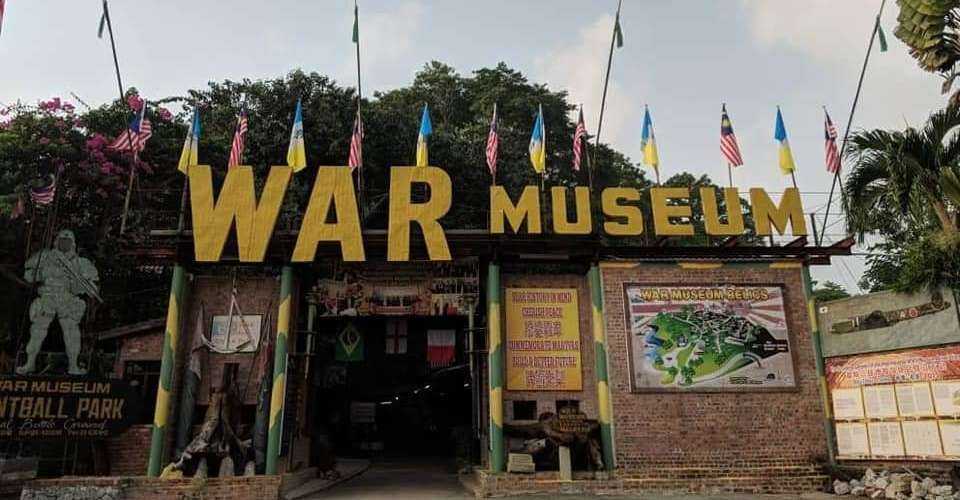
The Batu Maung Fort, constructed by the British before World War II, was left deserted post-war until 2002 when the site was repurposed as a war museum, preserving its historical significance. (Photo: Facebook)
In the absence of other visitors, with only the silence of the jungle surrounding you, the atmosphere is intense. It is as if the very air carries whispers of the past, making the chilling presence of unseen forces felt.
This sensation, as if the spirits of those who suffered are still wandering the grounds, is both unsettling and profound, emphasizing the deep scars left by history in this secluded spot.
I am in Penang, Malaysia, where there lies a war museum enveloped in a distressing veil of history and supernatural beliefs.
The Batu Maung Fort, constructed by the British before World War II, aimed to protect Penang Island from maritime invasions with its network of tunnels, pillboxes, and artillery placements.
Despite these defenses, the fortress was vacated by British forces in anticipation of the Japanese invasion in December 1941. The Japanese then utilized it to safeguard their naval operations in the area.
Left deserted post-war, it wasn't until 2002 that the site was repurposed as a war museum, preserving its historical significance.
Once a site of immense suffering, where Japanese forces tortured prisoners during World War II, this museum reminds us of past brutalities. Locals murmur tales of hauntings, believing the spirits of those who perished still roam its grounds.
The staff at the museum shared that they even had to discontinue night tours due to visitors' growing belief in the site being haunted.
When questioned about his own beliefs, he confidently affirmed the presence of supernatural spirits, recounting tales of a former colleague who heard sounds of the Japanese army close by and the agonized screams of torture victims, leading to a belief that he was possessed and ultimately resulting in his resignation.
This eerie account adds a layer of uncanny intrigue to the historical significance of the museum.
The ambiance of the museum itself is unlike any other, marked by an eerie tranquility that contrasts sharply with the horrors it commemorates.
Upon entering, visitors are immediately struck by the tangible sense of history and sorrow that permeates the air, the museum houses relics of war, including a bomb vest that creepily mirrors modern devices, alongside a formidable 6-inch gun, a silent yet powerful witness to the violence of the past.
The dense jungle surrounding the museum envelops it in a veil of mystery and solitude, enhancing the feeling that one has stepped into a realm suspended in time. Signs warning of spiders, scorpions, and venomous insects underscore the lurking natural threats of the environment, contributing to the ominous ambiance that pervades the area.
The path through the museum is not just a physical journey but a psychological assessment of one’s inner strength, leading visitors through rooms where unspeakable acts were committed. Bullet holes scar the walls as if visceral evidence of the suffering endured within.
Yet, the journey is far from over.
The museum extends deep into the jungle, where the remnants of British and Indian army barracks lie hidden. These structures, built in the 1930s as a defensive measure against Japanese forces, now stand empty, engulfed by the jungle's relentless growth. Nets strung overhead protect visitors from falling debris, a small comfort in an otherwise haunting environment.
The path culminates in a somber area where executions were carried out, a place where the brutality of war is laid bare.
The museum does not shy away from depicting the atrocities committed, with graphic images that confront visitors with the reality of war's inhumanity. Scenes of violence, rape, and the aftermath of battle force a reflection on the depths of human cruelty committed by the Japanese army.
The unique blend of the supernatural realm, the historical significance of the place, and the additional local Malaysian folklore capture the imagination creating a compelling narrative for the visitor who comes here thinking it is just “another war museum.”
Here is a world where history and myth converge, offering a profound reflection on the past and its lingering echoes in the present.
*The views expressed in this article are those of the author and do not necessarily reflect the official editorial position of UCA News.


